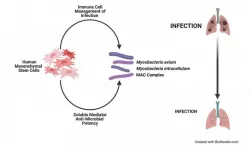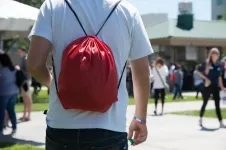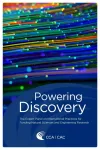In a study published May 3rd in Nature Biotechnology, UCSF Weill Institute for Neurosciences researchers implanted novel neurostimulation devices that monitor brain activity for many months, with and without deep brain stimulation (DBS) therapy. Pairing the brain recordings with wearable monitors of movement, they identified patterns of brain activity corresponding to specific movement abnormalities associated with Parkinson's. Their research provides the first evidence, during normal activities of daily living, for a long-held hypothesis that Parkinson's symptoms are related to erratic brain wave patterns, and demonstrate how DBS restores order to patient brain waves.
"We can record hundreds of hours of brain wave activity wirelessly as patients go about normal activities," said Philip Starr, MD, PhD, the Dolores Cakebread Professor of Neurological Surgery at UCSF and senior author of the study. "It allows us, really for the first time, to understand the brain activity behind specific neurological problems as they occur in the real world."
Parkinson's disease is a degenerative neurological disorder that causes slow movement (bradykinesia), trouble walking, and tremors, as well as symptoms unrelated to movement. According to the Parkinson's Foundation, some 60,000 Americans are diagnosed with Parkinson's disease every year. The exact cause of Parkinson's is not known, but all patients show decreased levels of dopamine - a neurotransmitter that regulates motivation in the brain.
It's long been suspected that erratic brain wave patterns also play a role in triggering Parkinson's symptoms. Previous research in monitoring brain wave activity of Parkinson's patients has been limited to short periods in clinical settings. This greatly limits the amount of data available for analysis - providing a limited glimpse of patient brain activity which cycles and changes throughout the day.
Starr and study lead author Ro'ee Gilron, PhD, a postdoctoral scholar in the Department of Neurological Surgery, sought to get a more complete picture. They implanted small sensors that measure electrical activity into the subthalamus and motor cortex brain areas of five patients with Parkinson's disease. These sensors were connected to pulse generators enabled to sense brain activity. This allowed for continuous recording of brain activity while patients went about their daily routine.
Months of recordings produced a massive amount of data. To sort through it all, the researchers developed an algorithm to compare brain wave activity with data recorded from movement-sensing devices that patients wore on their wrists. They discovered that periods of dyskinesia (excessive movement induced by medications) and bradykinesia corresponded with exaggerated brain waves in specific frequency bands, both in the subthalamus and in motor cortex.
After months of recording and analysis, the researchers went further and measured the effect of DBS on the patients. DBS delivers electrical impulses into the brain and has long been used to ameliorate the symptoms of Parkinson's disease, though why it worked was not previously understood. This study demonstrated that deep brain stimulation appears to improve Parkinson's symptoms by regulating patients' erratic brain wave patterns, partly by suppressing lower frequency waves that inhibit movement, and regulating higher frequency waves that promote movement.
Previous studies using implanted recording systems could not record the effects of active stimulation on brain wave activity because the electrical signals created by stimulation caused recording interference. In the new study, Gilron and colleagues developed a workaround using the same principal used in noise cancelling headphones. By offsetting the electrical waves created by stimulation, the researchers could make the signals cancel each other out, allowing for accurate recording of brain waves by the recording lead.
"This is the first time we've been able to measure the effect of continuous stimulation on brain waves," said Gilron. "We've done deep brain stimulation in hundreds of thousands of patients before without any way to monitor the immediate effect. It was like trying to treat blood pressure without measuring it."
These broad findings help clarify some underlying factors in Parkinson's Disease, but every Parkinson's patient will likely have their own unique brain wave fluctuations. The researchers say that this is exactly why continuous neural recording is so crucial to successful treatment. The massive dataset accumulated from patient recordings helps to reveal the most minute brain wave patterns that correlate with Parkinson's symptoms. With proper analysis, onset of Parkinson's symptoms could be anticipated, and brain wave patterns corrected when symptoms manifest.
"It's like the Hubble Space Telescope," said Gilron. "We could view the night sky before it, but Hubble allowed us to see much greater detail and volume and it led to unique discoveries. I hope that this technique will as well."
The next step for the researchers is a randomized clinical trial including 10 patients. The researchers believe that this will greatly accelerate individualized treatments for Parkinson's disease because new algorithms to identify symptom patterns can be tested immediately, as opposed to the years and sometimes decades involved in developing new medications.
The findings also have potential beyond Parkinson's disease, the researchers say. Numerous neurological disorders related to erratic brain wave activity like epilepsy, chronic depression and chronic pain could likely be treated in the same way -- through real-time monitoring of brain activity and personalized neuromodulation.
"We're looking at the Parkinson's population as a way to develop this platform," said Starr. "Hopefully this will be utilized in disorders where we currently don't have any effective stimulation therapies."
INFORMATION:
Authors: Philip A. Starr was the study's senior author. Ro'ee Gilron was the study's lead author. For a full list of authors see study online.
Funding: NIH/NINDS UH3 NS100544 (BRAIN Initiative)
Disclosures: Implanted study devices were provided at no charge under a contract with Medtronic, Inc.
About UCSF: The University of California, San Francisco (UCSF) is exclusively focused on the health sciences and is dedicated to promoting health worldwide through advanced biomedical research, graduate-level education in the life sciences and health professions, and excellence in patient care. UCSF Health, which serves as UCSF's primary academic medical center, includes top-ranked specialty hospitals and other clinical programs, and has affiliations throughout the Bay Area. UCSF School of Medicine also has a regional campus in Fresno. Learn more at ucsf.edu, or see our Fact Sheet.







